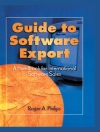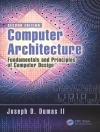The only comprehensive reference-tutorial on 3ds Max available, this book is everyone’s favorite. Whether you’re a beginner lookingfor 3D basics or a full-fledged animator seeking new ways to dazzleviewers with your creations, it’s all here. You’ll find pages ofprofessional tips, loads of advice, and more than 150 step-by-steptutorials guaranteed to build your skills and spark yourcreativity. A 16-page color insert highlights cutting-edge workfrom 3D artists. A valuable companion DVD provides all the examplesand content from the book, including unique models and textures youcan customize on your own, and a searchable, full-color version ofthe book.3ds Max 2009 Bible covers both 3ds Max 2009 and 3ds Max2009 Design and covers:* Navigating the viewports with the View Cube, Steering Wheels, andother ways.* Creating realistic materials with new Pro Materials.* Using Spline Mapping to improve texture mapping over irregularshaped objects.* Blending multiple texture maps together with the new Composite Map.* Creating architectural walkthroughs with the Walkthrough Assistant.Don’t miss out on the newest version of this bestselling resource!
विषयसूची
Preface.Acknowledgments.Part I: Getting Started with 3ds Max.Quick Start: Firing a Cannonball.Chapter 1: Exploring the Max Interface.Chapter 2: Controlling and Configuring the Viewports.Chapter 3: Working with Files, Importing, and Exporting.Chapter 4: Customizing the Max Interface and Setting Preferences.Part II: Working with Objects.Chapter 5: Creating and Editing Primitive Objects.Chapter 6: Selecting Objects, Setting Object Properties, and Using Layers and the Scene Explorer.Chapter 7: Transforming Objects, Pivoting, Aligning, and Snapping.Chapter 8: Cloning Objects and Creating Object Arrays.Chapter 9: Grouping, Linking, and Parenting Objects.Part III: Modeling Basics.Chapter 10: Learning Modeling Basics and Working with Subobjectsand Helpers.Chapter 11: Introducing Modifiers and Using the Modifier Stack.Chapter 12: Drawing and Editing 2D Splines and Shapes.Chapter 13: Modeling with Polygons.Part IV: Materials, Cameras, and Lighting Basics.Chapter 14: Exploring the Material Editor.Chapter 15: Creating and Applying Standard Materials.Chapter 16: Creating Compound Materials and Using Material Modifiers.Chapter 17: Adding Material Details with Maps.Chapter 18: Configuring and Aiming Cameras.Chapter 19: Using Lights and Basic Lighting Techniques.Part V: Animation and Rendering Basics.Chapter 20: Understanding Animation and Keyframe Basics.Chapter 21: Animating with Constraints and Controllers.Chapter 22: Learning to Render a Scene.Part VI: Advanced Modeling.Chapter 23: Building Complex Scenes with XRefs and Using Vault.Chapter 24: Working with the Schematic View.Chapter 25: Deforming Surfaces and Using the Mesh Modifiers.Chapter 26: Working with Compound Objects.Chapter 27: Modeling with Patches and NURBS.Chapter 28: Adding and Styling Hair and Fur, and Using Cloth.Part VII: Advanced Materials.Chapter 29: Using Specialized Material Types.Chapter 30: Unwrapping UVs and Using Pelt Mapping.Chapter 31: Creating Baked Textures and Normal Maps.Part VIII: Advanced Animation Techniques.Chapter 32: Using Animation Modifiers.Chapter 33: Animating with the Expression Controller and Wiring Parameters.Chapter 34: Working with Function Curves in the Track View.Chapter 35: Using Animation Layers and the Motion Mixer.Part IX: Dynamic Animation.Chapter 36: Creating Particles and Particle Flow.Chapter 37: Using Space Warps.Chapter 38: Simulating Physics-Based Motion with reactor.Chapter 39: Animating Hair and Cloth.Part X: Working with Characters.Chapter 40: Understanding Rigging and Working with Bones.Chapter 41: Working with Inverse Kinematics.Chapter 42: Creating and Animating Bipeds and Crowds.Chapter 43: Skinning Characters.Part XI: Advanced Lighting and Rendering.Chapter 44: Working with Advanced Lighting, Light Tracing, and Radiosity.Chapter 45: Using Atmospheric and Render Effects.Chapter 46: Raytracing and mental ray.Chapter 47: Batch and Network Rendering.Chapter 48: Compositing with Render Elements and the Video Post Interface.Part XII: MAXScript and Plug-Ins.Chapter 49: Automating with MAXScript.Chapter 50: Expanding Max with Third-Party Plug-Ins.Appendix A: What’s New with 3ds Max 200.Appendix B: What’s on the DVD.Index.
लेखक के बारे में
Kelly L. Murdock has been authoring computer books for manyyears now and still gets immense enjoyment from the completed work.His book credits include various 3D, graphics, multimedia, and Webtitles, including eight previous editions of this book, 3ds Max Bible. Other major accomplishments include Edgeloop Character Modeling for 3D Professionals Only, Maya 6 and 7Revealed, Light Wave 3D 8 Revealed, The Official Guide to Anime Studio, Poser 6 and 7 Revealed, 3D Game Animation For Dummies, gmax Bible, Adobe Atmosphere Bible, Master VISUALLY HTMLand XHTML, Java Script Visual Blueprint, and co-authoring dutieson two editions of the Illustrator Bible (for versions 9 and10) and three editions of the Adobe Creative Suite Bible.With a background in engineering and computer graphics, Kellyhas been all over the 3D industry and still finds it fascinating.He’s used high-level CAD workstations for product design andanalysis, completed several large-scale visualization projects, created 3D models for feature films and games, worked as afreelance 3D artist, and even done some 3D programming.Kelly’s been using 3D Studio since version 3 for DOS. Kellyhas also branched into training others in 3D technologies. Heteaches at the local university and is a frequent speaker atvarious conferences.












